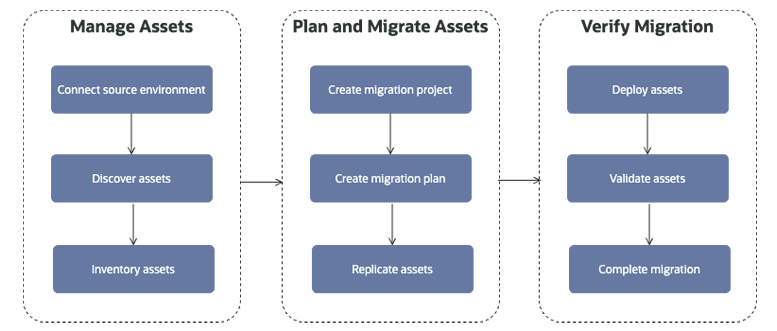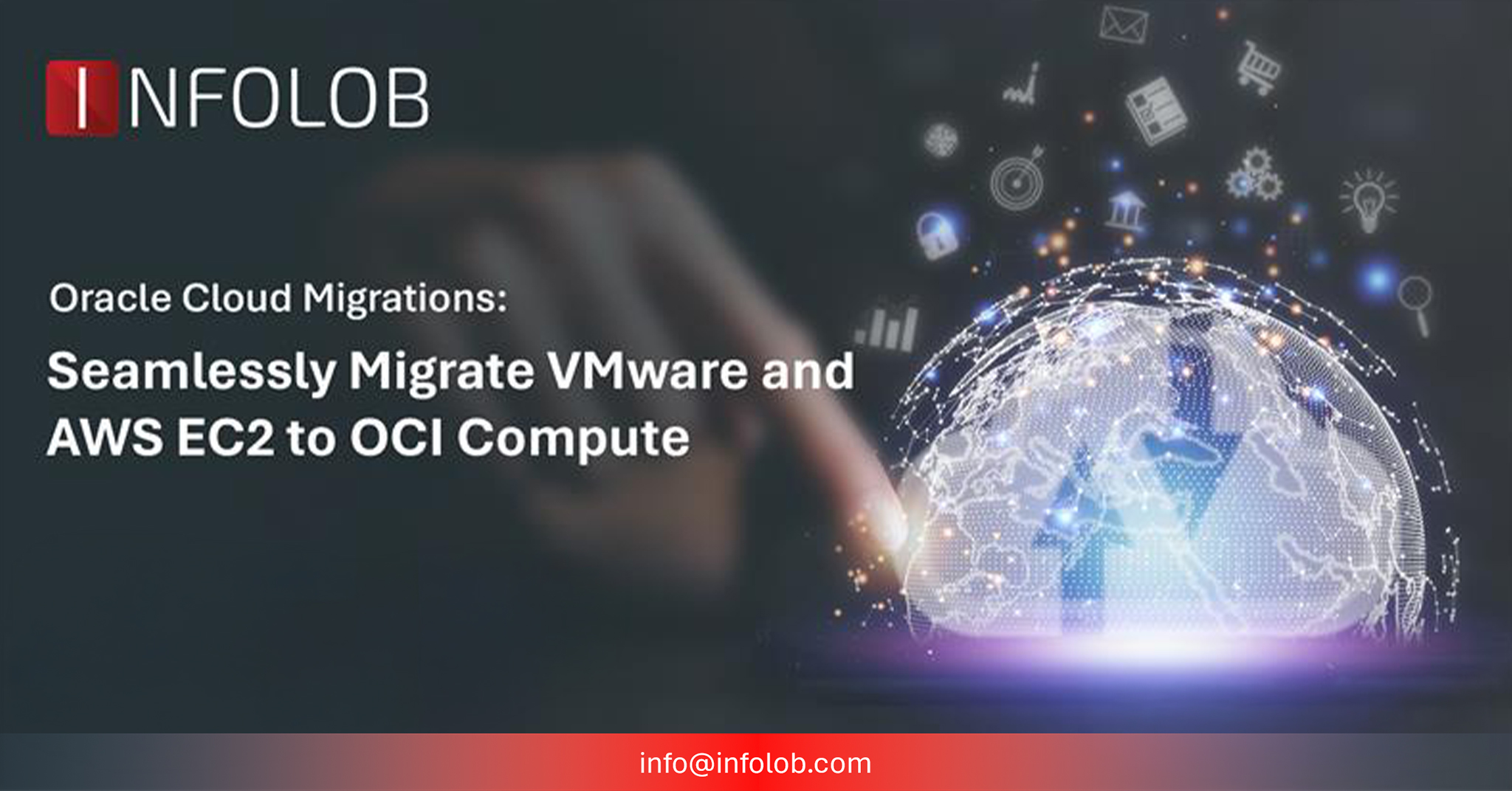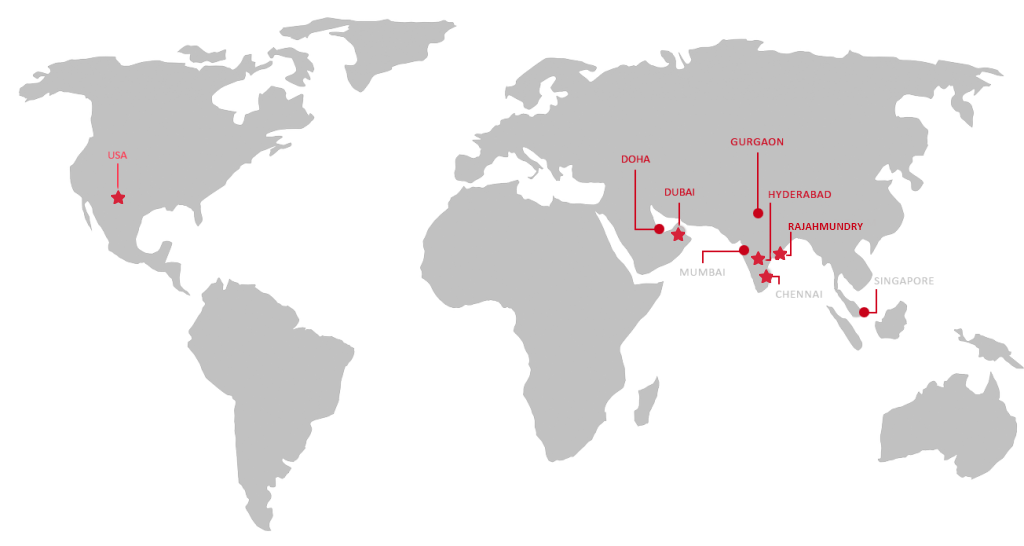The veins of multidimensional business growth lie in the cloud migrations and how best these implementations are carried out that support various cloud environments. To make the cloud migration versatile and explore innovation touchpoints, Oracle Cloud Migrations has been released. INFOLOB being a recent Oracle APAC Winner in Solution Innovation, Business Insights and Rising Star Partner FY24 for South Asia is implementing the Oracle Cloud Migrations for enterprises worldwide. Let’s see what the new release unveils for the future:
Oracle Cloud Migrations greatly support migration of Amazon Web Services (AWS) EC2 virtual machine instances to Oracle Cloud Infrastructure (OCI). The power of this feature – Oracle Cloud Migrations drives migrations from VMWare Estates as well as from AWS EC2 VMs to OCI Compute VMs.
Migration is an integral aspect of VM lifecycle, with a customer focus on infrastructure modernization or shift in their platform. This completely managed OCI toolset offers the enterprises with great control over the migration workflow with simplification and automation of the process, including the capabilities:
- Discovery of VMs in the source environment happens automatically
- Creation and management of an inventory within OCI of the resource identified in the source environment
- Having a plethora of compatibility assessments, metrics, recommendations, and cost comparisons
- Planning and simplifying the deployment of migration targets in OCI compute
Workflow of Oracle Cloud Migrations
The Oracle Cloud Migrations workflow has three phases – Manage Assets, Plan and Migrate Assets, and Verify Migration. Let’s look at each one of these in detail.

1. Manage Assets
The OCM service begins when a user’s Oracle Cloud Infrastructure tenancy is connected to their source environment where two connection types might be needed. VMware migrations leverage an agent deployed to the VMware environment whereas AWS migrations perform agent-less approach through establishing connection directly from OCI. Once the connection is established, all the necessary resources including – compute, storage, and networking are automatically discovered to start the migration. The OCI Vault service stores the credentials for authentication to the source environment and IAM policies provide credentials to the agent or agent-less environment.
For OCM, all the assets are stored in a user’s OCI tenancy, probably a database known to be – Inventory. This is used to plan and migrate the asset. However, some assets have performance data stored based on the type and configuration within OCI monitoring service. The inventory has a search feature where asset attributes with any OCI tags can be searched and updated based on the demand with the help of a discovery work request or using a discovery schedule.
2. Plan and Migrate Assets
In Oracle Cloud Migrations, a migration project serves as a logical container that organizes migration assets and their migration plan, which details how assets are transitioned. All assets are included by default, but individual assets can be excluded for flexibility. Assets are point-in-time references from the inventory, and migration plans define the target OCI configuration based on source attributes and performance data, providing a starting point that is customizable.
Multiple plans can support different migration phases or testing scenarios, including monthly cost estimates for varying configurations. Data replication, independent of migration planning, ensures a secure transfer to a designated availability domain using HTTPS, with incremental replication supported where source environment features allow. This replicated data can be reused across multiple plans without affecting source synchronization.
3. Verify Migration
Oracle Cloud Migrations integrates with Resource Manager to deploy target resources. Once asset data is replicated to OCI, migration plans are executed to clone the data, generate a Resource Manager Stack with the configured target attributes, and ensure successful deployment, sometimes requiring basic configuration remediation.
For migration testing, the stack can be deleted to prevent orphaned resources. Validation of migrated resources occurs externally, and if verification fails, the resources can be terminated, updated, and re-deployed using the migration plan. A migration project is marked complete once resources are verified and in production, locking it from further modifications, though it can be reopened if migration needs to be resumed.
The value slice of Oracle Cloud Migrations is accelerating the enterprises’ journey to Oracle cloud through the automation of asset discovery, migration planning, and replication processes with the help of Oracle Cloud Console, REST APIs, and CLI.
Our Step-by-Step Approach for Oracle Cloud Migrations Implementation
Step 1: Prepare the Source Environment
- Assess and Plan:
- Identify the VMs in AWS that need to be migrated.
- Assess their compatibility with OCI.
- Plan the migration timeline and resources required.
- Backup Data:
- Ensure that all critical data on the AWS VMs is backed up.
- Create snapshots of the AWS instances.
- Install OCM Agent:
- Download and install the Oracle Windows VirtIO drivers (for Windows only).
- Create a User in AWS:
- Create a user in the AWS account, as we will need its access ID and secret keys.
- Create AWS Policies for Authentication:
- Below are the required IAM permissions for Discovery and Replication
Step 2: Set Up OCI Environment
- Create OCI Compartment:
- Create a new compartment in OCI to organize and manage the migrated resources.
- Set Up VCN and Subnets:
- Create a Virtual Cloud Network (VCN) and necessary subnets in OCI where the VMs will be migrated.
- Configure security lists and route tables as needed.
- IAM Policies:
- Ensure that appropriate IAM policies are in place to allow the OCM service to perform migrations.
- Create a Bucket in OCI:
- Create a bucket in OCI for replication.
Assign necessary permissions to users involved in the migration process.
Step 3: Configure OCM in OCI
- Access OCM Console:
- Log in to the OCI Console.
- Navigate to the Oracle Cloud Migrations service.
- Go to Cloud Migrations and then to Remote Connection to create a source environment for AWS.
- Discovery in Cloud Migrations:
- Create an asset source and run discovery. If all the authentications are successful, all AWS machines ready for migration will be displayed.
Step 4: Start the Migration Activity
Create a Migration Project:
- Create a new migration project in OCM.
- Provide necessary details such as project name, description, and compartment.
Migration Plan:
- Go to Cloud Migrations and then to Migration Projects to create a migration plan.
- Select the shape and preferred configuration.
- Select the target VCN and subnet.
- Select shape and preferred configuration
- Select target VCN and subnet
- Now, go inside the migration plan and select the VMs ready for migration. Add details, provide bucket details that are created for replication, and go to migration plan to replicate.
- Once the replication begins, status appears in the window. Generate RMS stack as it creates a Teraform stack to provision a VM in OCI.
- Once the stack is generated successfully, go to the Resource Manager. You will see the new stack has been provisioned. Go inside the stack, run the plan, and then apply it.
- Once apply is successful , we can see new VM in the target inventory. Once post check is successful, we must make sure to apply licence for windows machines.
The Advantage of OCI Compute Migration
OCI’s Compute platform is built for performance, flexibility, and cost. All these dynamics can be achieved by providing the options for virtual instances at a fraction of the price of similar options on other platforms. The OCI Compute flexible instances helps you to build your solution pitching perfectly as you need it without any additional burdens. Choose the granular number of cores and memory that a VM needs and proceed with the migration.
Success of INFOLOB’s Oracle Cloud Migrations
INFOLOB began with a comprehensive assessment of the source environments, ensuring compatibility with OCI and creating an efficient migration timeline. Using OCM’s automated discovery capabilities, INFOLOB identified and inventoried the enterprise’s compute, storage, and networking assets, enabling seamless asset organization. Migration plans were tailored to the business’s unique needs, including phased rollouts and testing scenarios to minimize disruption. INFOLOB also utilized OCI’s advanced features such as flexible compute instances, granular resource allocation, and cost optimization tools, which reduced operating costs while enhancing performance.
The migration involved replicating data securely, generating Resource Manager Stacks, and validating target configurations to ensure smooth deployment. INFOLOB conducted rigorous post-migration checks and integrated licensing for Windows workloads. The end-to-end process empowered the enterprise with a modern, scalable, and cost-efficient cloud platform, accelerating their digital transformation journey and enabling them to focus on innovation and global expansion.
For all queries, please write to:





